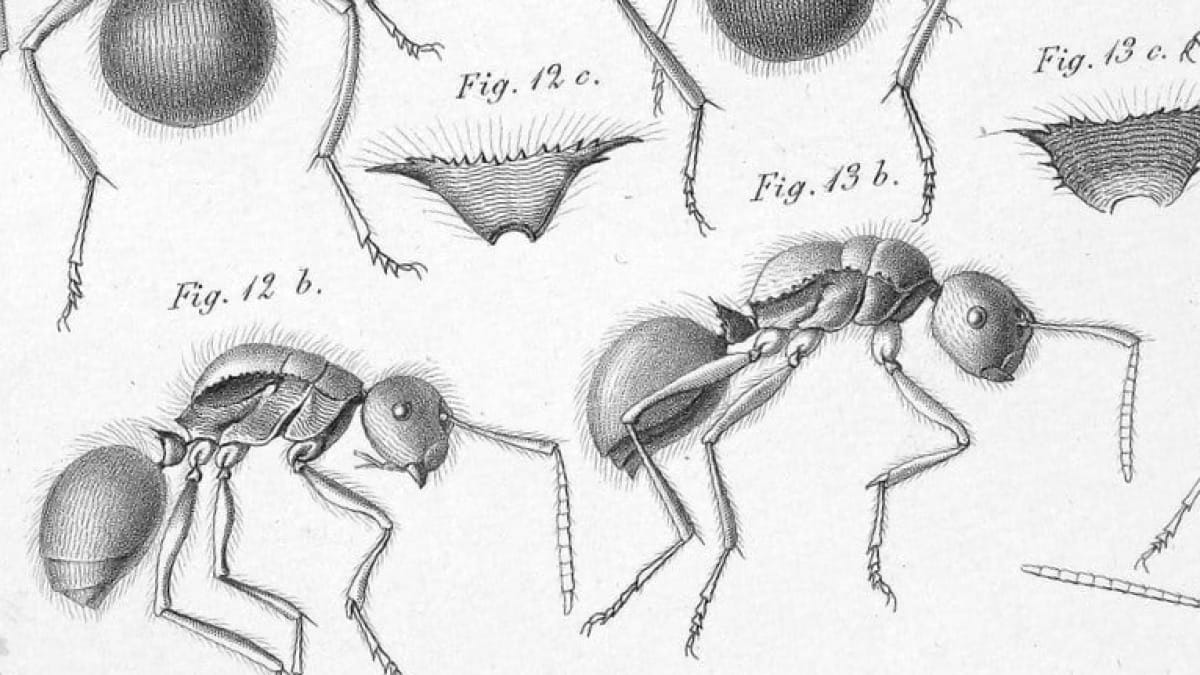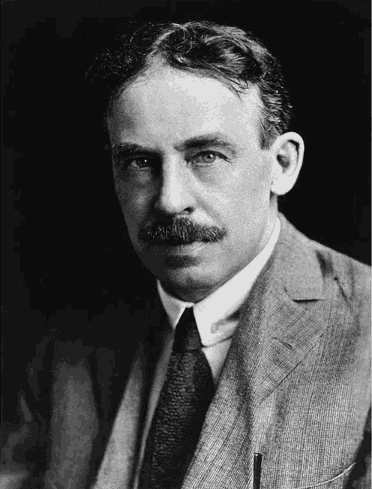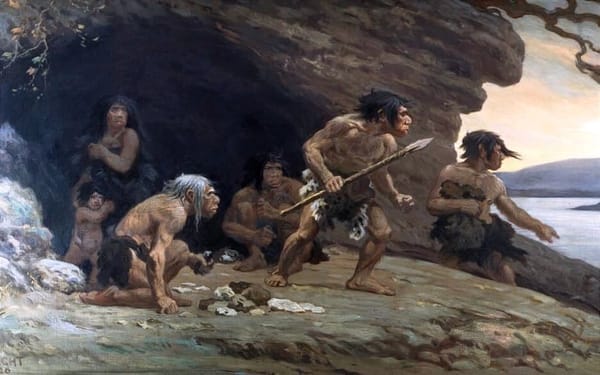Why does complexity science like ants so much?
Ants are basically the unofficial mascot of complexity science. Why?

Open a book about complexity science, and you'll find ants.
Ants crawl over the cover of James Ladyman and Karoline Wiesner's 2020 book What is a Complex System? Steven Johnson's Emergence carries the subtitle "The Connected Lives of Ants, Brains, Cities, and Software" and gives ants their own chapter. The index of Geoffrey West's Scale lists entries for ants and ant colonies on 5 pages, scattered from the introduction to the conclusion. Ricard Solé's somewhat technical 2011 book on phase transition devotes two pages to ants. Neil These's less technical, more woo-woo Notes on Complexity has even more ants: they appear on pages 43, 34, 35, 30, 31, 24–28, 110, and 110 as examples of everything from complex systems as a whole to feedback loops, local interactions and... materialism? Melanie Mitchell's Complexity: A Guided Tour mentions ant colonies on 14 pages. One of complexity's holy texts, Douglas Hofstadter's weird and wonderful Gödel, Escher, Bach, expounds on ant bridges, ant colonies, ant castes, ant colony brains, ant intelligence, ant order and chaos, ant teams, and ant communism. Ants even get their own Ant Fugue occupying 25 pages.
These are just volumes that happen to sit on my own personal bookshelf. I looked through the indices of the complexity books listed in Stuart Kauffman's introduction to the Foundational Papers in Complexity Science and at least half feature ants.[1]
This is all to say that, if the Santa Fe Institute ever needs a mascot, there's a clear choice. I'd honestly be disappointed in their capacity for self-irony if they didn't pick the ant (even I am more of a starling fan, myself).
Ants have been the weird, insectoid face of complexity science since before I was born. But why? Of all the wonders the complex universe has to offer, why ants?
The easy answer is that ant colonies are just a nice example of complexity. They're intuitive, everyday things that very clearly exhibit several important general properties of complex systems. They're made of many little parts that together form a wholes with properties that are qualitatively unlike those of its parts. Ants are cheap to feed and house and most people don't have ethical issues with doing experiments on them. And for PR reasons, ants are great: people already know what they are and think animals are neat. With that alone, you've basically won half the pop sci battle.
That's one answer. But it's not a very satisfying one, because there are plenty of other animals that you might argue are equally good avatars of complexity: starlings and schooling fish are obvious choices, as are bees, termites, and other non-ant social insects. What about herds of caribou or sheep? Ants being a good example of complexity doesn't explain how they ended up being the example.

For those of you interested in the history of the lab mouse
Evolution is a chain of frozen accidents, and so is science. Things could have turned out differently. The mouse is biology's favorite mammal. But why mice, exactly? There's not much practical difference between a mouse and a hamster. Both reproduce quickly, catch human diseases, and are cheap to raise and house. As best I can tell, we have more lab mice than lab hamsters because mouse fanciers in the 18th and 19th century started breeding lots of fancy mice and scientists used their weird hobby to work out Mendelian inheritance in a mammal for the first time.
So: why ants?
William Morton Wheeler
I'm going to skip to the punchline here: the ant thing might trace back to one particular guy. Entomologist William Morton Wheeler was writing about ants and emergence in the 1920s. That's right. Ants were already discussed as an example of emergent complexity before complexity science existed.

Wheeler, born in 1865, was the early 20th century's foremost expert on social insects and one of the most influential biologists of his age. He arguably belonged to a tradition in biology called organicism, which has connections to the philosophical position of the same name.[2] Whereas reductionist scientists wanted to break biology down to physics and chemistry, organicists were concerned with interactions within and between groups, be they cells in a body or individuals in a society. Some organicists thought causality could flow from the top down, not just from the bottom up — a position that you'll still find plenty of disagreement about among complexity scientists. Even as early as the 1860s, organicist biologists were noticing similarities between societies and organisms, both in terms of how they behave and how they evolve in time. That's an idea that's alive and well in modern complexity science and which, I'd argue, enjoying a renaissance under the banner of the expanded evolutionary synthesis.[3]
By Wheeler's time, scientists had widely accepted that species evolve from older ones. What they couldn't agree on — and what we're still, to some extent, figuring out today — is how that happens. Darwin's original theory of natural selection posits that selection acts on the level of individual organisms: those that produce the most viable offspring come to outnumber their competitors over time. Survival of the fittest. It's a rather reductionist idea, actually. So it's perhaps unsurprising that many organicist scientists opposed evolution by natural selection. Social insects were one of their favorite counterexamples.
Darwin actually foresaw the trouble social insects would stir up for his theory. He called them "by far the most serious special difficulty" for natural selection. That's because ants don't care much for the individual. Most ants in a colony don't have offspring at all, only the queen does. And decades later, this fact took center stage during Herbert Spencer and August Weismann's famous 1890s debates on natural selection between. Interestingly, one of the few things the two could actually agree upon was that selection must act on the whole colony rather than the individual ant: Weismann, a Darwinist, wrote that "the state is selected, not the single individual; and the various forms behave exactly like the parts of one individual in the course of ordinary selection." Spencer agreed, and infamously took this idea further than the anthill. He saw human societies as groups competing under natural selection, too, and the result was a dark line of thought culminating in peusodscientific Social Darwinism.
Wheeler's PhD advisor Charles Whitman was a devotee of Spencer and an organicist, and Spencer's indirect influence is obvious in Wheeler's work. Like Spencer before him, Wheeler saw human society reflected in insect collectives. Also like Spencer, he was a eugenicist, though his serious scientific work seems to have remained squarely focused on ants.[4] I think this explains much of the ambivalence I felt reading Wheeler: His thoughts on emergent complexity — a term he used to describe insect societies — feel incredibly modern. He saw emergence as the result of interactions between more fundamental units, not as something magical, and his almost baffled frustration at his colleagues' insistence that "deity" emerges from mind is honestly endearing. I can almost feel his frustration through the page:
I fail to understand why Alexander and Morgan select deity as the supervenient level next to mind, since their general scheme of emergent evolution most naturally demands the social as the next level in ascending order.
Like today's great complexity scientists, Wheeler saw fundamental principles beneath the specifics of his system of interest. Before settling on ants, he studied embryos — another system of self-organizing, simple parts. But disappointingly, Wheeler's insightful work can sometimes lead to unexpectedly dark places. For instance, in a 1926 piece in Science on "Emergent Evolution and the Social,"[5] he concludes by arguing that increasing social complexity in humans is somehow causing us to physically and intellectually "degenerate" in analogy to worker ants that give up individual fitness for the good of the whole. It's impossible to look back on such comments without getting uneasy, seeing as he appears to have been a member of the American Eugenics Society.
For our purposes tracing the history of ants as the go-to model organism for complexity science, Wheeler matters because he explicitly advocated for ants as the ideal model system for studying emergent complexity in general. In "Emergent Evolution and the Social," Wheeler argued that societies had been overlooked as examples of emergence.
Non-human societies, especially, he argued, had "fallen between two stools" — sociologists had left the social lives of animals and plants to biologists, but biologists were more interested in the details of individual organisms than in their aggregate behavior. Wheeler saw this as a missed opportunity to understand not only societies themselves, but also the mind — the core preoccupation of the early emergentists. It's easier to manipulate the interactions between ants in an anthill than to reach inside a living creature and manipulate its gene regulation networks or rewire its neurons. For him, social insects were the perfect test bed for testing ideas about emergence:
Owing, moreover, to the loose and primitive character of the integration and the size of the components even in the densest societies, it is possible to ascertain the behavior of the parts and to experiment, with them more extensively than with chemical and organismal wholes... experiments in subdividing, compounding, castrating and grafting, and in introducing foreign elements with a view to observing their effects on animal and plant societies as emergent wholes, can be carried far beyond the limits of such experiments on the single living organism.
That's just as true for human societies as for at ones, I suspect it's a good partial explanation for the dominance of social science in modern complexity research.
The ant renaissance
Wheeler's emergentist view of social insects would have its day in the sun decades later. But the reductionist, atomist wartime years were something of a winter for perspectives like his. Breaking things down into little pieces was working very well in physics, and that attitude spread to other fields, including the study of social insects. Up until the 1950s and -60s, researchers focused mostly on detailing the brute facts of ant life: the sizes of colonies, the anatomy of individuals, etc.
That changed in a big way with Edward Osborne Wilson, a towering figure in sociobiology who happens to be the academic "grandson" of Wheeler. Wilson started out as an ant taxonomist at Harvard in 1956, where Wheeler had worked, and was clearly deeply influenced by Wheeler even though they never met. Wilson once remarked that Wheeler's 1910 classic Ants: Their Structure, Development, and Behavior was the first entomology book he ever bought, and most of his work focused not on what social insects are like individually but rather how they interact with each other. The popularity of ants in complexity science almost certainly has to do with him — and by extension, Wheeler.
Wilson was never officially affiliated with the Santa Fe Institute, but he did apparently visit frequently. He's cited by SFI working papers on collective intelligence and collaborated with SFI researchers. Scanning through his publication list, it's clear he had wide-ranging interests and saw a connection between the social insects he studied and everything from human intelligence to politics and ethics. As was the case for his intellectual forefathers, those connections weren't always good ones. Wilson's 1975 book Sociobiology looks for explanations for human behavior in evolution, and was criticized as flirting with scientific sexism and racism and letters that surfaced after his death revealed that he had exchanged friendly correspondence with a prominent racist.

Like Wheeler before him, Wilson would become the late 20th century's leading voice on social insects, especially ants, and a leader in biology at large. His focus was squarely on understanding the biology of social behavior, including how ants communicate via pheromone — something he discovered in the late 50s. In 1971, Wilson published The Insect Societies, which argued that the evolutionary forces that shaped social insects influence the behavior of other animals, too. Perhaps influenced by Wilson, research on social insects in the 1970s and 1980s went through something of a phase transition: it shifted focus from the characteristics of individual ants to a focus on collective dynamics. For instance, researchers originally thought that an ant's role in the colony was determined at the individual level; there were permanent castes of workers specialized for certain jobs. Reflecting on her field in a 1996 article in Nature,[6] ant expert Deborah Gordon described ant castes as a mirror of "one gene, one enzyme" thinking in molecular biology.
Both ant castes and "one gene, one enzyme" turned out to be oversimplifications. Starting in the late 1980s, entomologists realized that task assignment in ants was much more than caste. While ants do have castes and individual characteristics like age and genetics certainly influence the jobs that ant workers perform, most individuals perform many jobs and switch tasks throughout the day. By 1996, when Gordon wrote her paper, evidence was mounting that ants decide tasks based on how often they interact with other ants performing other tasks. The less often a worker ant encounters another ant who's gathering, for instance, the more likely it is that she'll spontaneously switch tasks to gathering. That's quite different from pre-determined castes: an ant's role in its colony is relational, not purely individual.
In 1996, Gordon seems to have thought her field was still just getting started. "The behavioural ecology of social insects has only recently begun to generate a variety of approaches and attract interest from a variety of disciplines," she wrote. Some of that new interdisciplinary interest seems to have come from people working in the then-nascent field of complexity. Gödel, Escher, Bach devotes a lot of space to ants and they figure prominently in Emergence, which was published just 5 years later in 2001. What appears to be a landmark paper on the behavior of social insects as a collective, emergent phenomenon — Jean Louis Deneubourg and S. Goss' "Collective Patterns and Decision-Making — was published in 1988. It's a complexity manifesto that links ants to out-of-equilibrium physical systems and cites Gregoire Nicolis and Ilya Prigogine's 1985 classic of nonequilibrium physics, "Self-Organisation in Nonequilibrium Systems: Towards A Dynamics of Complexity" alongside Wilson's work on ants. A peek at its citation network reveals two clusters of citing papers: one all about ants, the other more broad and focused on collectives as the units of natural selection. Its more computationally explicit follow-up paper, "The self-organizing exploratory pattern of the argentine ant" is perhaps equally important, and is a key citation of Marco Dorigo's 1996-2000 flurry of high-impact papers on an ant-inspired swarm computer paradigm called "ant system."
Generally speaking, it seems fair to say biology started to develop a taste for collectives in the second half of the 20th century (perhaps thanks to Wilson, and in turn thanks to Wheeler), and that this trend intensified into the 1990s and early 2000s. It was then that the Santa Fe institute started a working group on social insects and supported research on ant colonies including work by Deneubourg, Eric Bonabeau, and Ricard Solé — a complexity scientist known now for his work on phase transitions. This is also the time when papers on collective phenomena in biology start showing up in the Santa Fe Institute's Foundational Papers of Complexity Science collection. There's C.S. Holling's "Resilience and Stability of Ecological Systems"and John Maynard Smith's "The Theory of Games and the Evolution of Animal Conflicts" in 1973, then R. Axelrod and W.D. Hamilton's "The Evolution of Cooperation in 1981. Craig Reynolds' landmark paper modeling the motion of bird flocks as the complex consequence of simple interactions between individual birds came out in 1987. That's rather analogous to how interactions between individual ants dynamically adjust the number of workers on each task. But, perhaps a bit ironically, there's nothing specifically about ants in the Foundational Papers.
So while ant colonies seem to be a case in which the tools and language of complexity has been applied to great effect, they don't seem to have contributed as much to theory in return — at least, the complexity community didn't consider any ant studies to be "foundational" complexity papers. Perhaps the ubiquity of ants in the books and imagery of complexity is more artistic than scientific. The ant colony is a metaphor, a single image that points succinctly at a much greater landscape of ideas.
That might not be entirely fair; ants do seem to have inspired collective computing efforts. Figuring out the full story would take more than a single blog post, and I fear I've already fallen down too many rabbit holes here. But I have a feeling I'll come back to ants, or at least to Wheeler and Wilson.
Finally, given that the innocent question "why does complexity like ants" led me to a list of members of the American Eugenics Society, I feel justified in favoring birds over bugs for the honor of being complexity's unofficial mascot. Of course, it's not the ants' fault what scientists did with them. But still — go starlings!
Footnotes
[1]: I wasn't able to check every book. Some of them include the index in free previews, but not all do.
[2]: Most of my information about the broader context for Wheeler and Wilson's work comes from this highly readable summary: Gibson, A. H. Edward O. Wilson and the organicist tradition. J. Hist. Biol. 46, 599–630 (2013).
[3]: The expanded evolutionary synthesis emphasizes old organicist ideas like top-down causation ("reciprocal causation" in the EES) and the ability of developmental processes to feed back on evolution.
[4]: Interestingly, most biograpies of Wheeler I've found do't mention that he was a member of the American Eugenics Society and attended eugenics conferences in the 1920s. It's also known that he was close friends with Raymond Pearl, a known eugenicist. Pearl is an interesting character for modern readers, because he saw himself as a liberal opposed to the fascist wing of his own research community — something of a chilling paralellel to certain strains of thought on the tech right today.
[5]: Wheeler, W. M. Emergent evolution and the social. Science 64, 433–440 (1926).
[6]: Gordon, D. The organization of work in social insect colonies. Nature 380, 121–124 (1996).
Note: Ghost has truly terrible support for footnotes, so I have to create all of these by hand. I unfortunately also hate linking in the body text of posts I intend to be read from start to finish, because I personally find links so distracting when I read. When I launched, I had planned to do all my referencing in footnotes for this reason, but it's so arduous doing them by hand I feel I may need to give in and start linking in the text. Anyhow, this is why not all the papers I mentioned in the post are linked or footnoted. I'm working on a solution!
Thanks for reading
There are many ways you can help:
- Subscribe, if you haven't already!
- Share this post on Bluesky, Twitter/X, LinkedIn, Facebook, or wherever else you hang out online.
- Become a patron for the price of 1 cappuccino per month
- Drop a few bucks in my tip jar
- Send recommendations for research to feature in my monthly paper roundups to elise@reviewertoo.com with the subject line "Paper Roundup Recommendation"
- Tell me about your research for a Q&A post (email enquiries to elise@reviewertoo.com)
- Follow me on Bluesky
- Spread the word!






